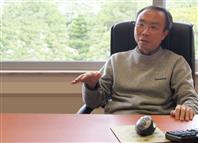In mid-2010, there were a series of pro-Cantonese protests in Guangzhou that struck a chord in many Hong Kongers who staged similar actions locally. The incident that sparked the controversy was the Chinese People’s Political Consultative Conference Guangzhou Committee’s proposal to increase Putonghua programmes on Guangzhou Television’s main and news channels. Then the Department of Culture further fueled the furor when it removed the pet phrase of late-Ming military commander Yuan Chonghuan from a memorial tablet. The government authorities had to make repeated attempts to pacify the public before sentiments subsided. Yet in December last year, the Guangdong Municipal Government announced policies limiting the media’s use of Cantonese. The problem is clearly still brewing.
Prof. Tang Sze-wing of the CUHK Department of Chinese Language and Literature is one of a few scholars in Hong Kong who study Cantonese grammar. He believes that the dialect will not be phased out easily because of its long history and the fact that it’s currently being used by over 50 million people in China and the world. He thinks however that many people including scholars have misconceptions about Cantonese and Chinese dialects. He said, ‘Dialects either get put down as inelegant or superfluously hailed, such as saying Cantonese is a highly developed language or that the Cantonese dialect has preserved the most Han-Tang grammar. Academics should be more objective.’
Professor Tang believes that dialects should be studied using scientific methods, starting from its core structure. For instance, for ease of understanding Cantonese grammar, one needs to have basic knowledge of the Chinese language and its grammatical features. He pointed out that though Cantonese and Putonghua are not very different grammatically, variations in meaning are given by utterance particles in Cantonese. This usage of utterance particles is very rare in other Chinese dialects.
Professor Tang explained that utterance particles are post-verbal elements which usually come after verbs or at the end of sentences, and they are unique to Cantonese. ‘Cantonese is particularly rich in verbal suffixes, particles and utterance particles. Their forms are also more complex.’
Professor Tang is now researching into discontinuous constructions in Cantonese. He explained that besides having many function words, their post-positions often find corresponding adverbs. The two can appear concurrently, forming a meaning-redundant discontinuous construction.
Some scholars think it inappropriate to study Chinese using the methods of foreign grammar analysis, but Professor Tang does not agree. He explained that according to the research directions of contemporary linguistics, grammatical studies should not be standardized hence there is no man-made form. He said grammatical studies should be descriptive and should be used to explain linguistic phenomena and to find a language’s natural ‘form’. ‘Using a grammatical studies approach to scrutinize Cantonese means using a set of scientific and objective tools to help us understand the structure of the dialect. It’s only by getting to the bottom of the language that we can accurately position Cantonese and prove that like other languages, it is highly organized.’ 


































































































































































Social Bookmarks